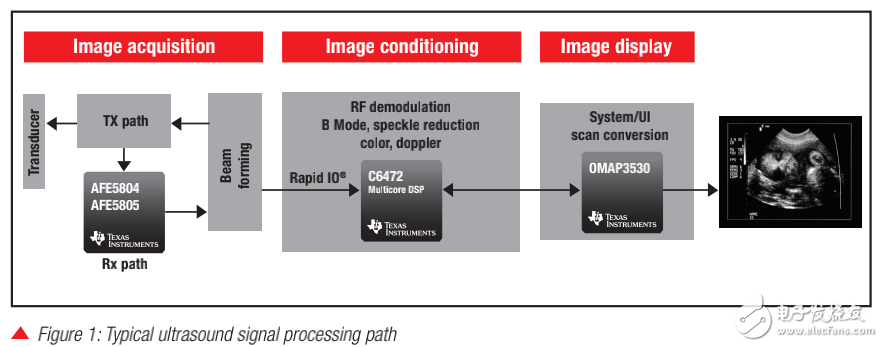
资料下载

德州仪器多核处理器带来便携式医疗成像系统的创新
Medical care is changing rapidly, and imaging systems based on multicore DSPs
effectively complement today’s trends.
Traditionally, due to cost and sheer size, access to sophisticated medical
diagnostic systems has been found mostly in densely populated urban areas,
where expert diagnosticians and technicians are available to operate them. Recent
advances in embedded processor technology have made it possible for high quality
and highly capable medical imaging systems to become much more portable and
cost efficient. With sophisticated medical imaging equipment available in smaller
clinics in outlying and rural areas, local technicians could telecommunicate
diagnostic images to urban centers, where experts provide recommendations and
real-time support. As a result, medical diagnosis can now be brought to the patient,
rather than transporting a patient with a life-threatening condition to a medical
imaging facility.
Other issues currently being discussed in the medical field are also well served
by advances in processor capabilities. In some cases, these issues are at odds with
one another. For example, many medical experts are calling for improved image
quality, while at the same time seeking to reduce exposure to the harmful radiation
that results from X-rays and nuclear imaging techniques. In the past, image
quality could only be improved if radiation was increased, or through an invasive
procedure.
Imaging systems with multicore DSPs offer another alternative, where innovative
and efficient image-enhancement techniques such as edge detection, contrast
enhancement, noise filtering, etc. can be easily programmed into one or more DSP
cores to improve image quality without increasing the level of radiation or even make
up for a decrease in radiation exposure to the patient.

声明:本文内容及配图由入驻作者撰写或者入驻合作网站授权转载。文章观点仅代表作者本人,不代表电子发烧友网立场。文章及其配图仅供工程师学习之用,如有内容侵权或者其他违规问题,请联系本站处理。 举报投诉
- 相关下载
- 相关文章





